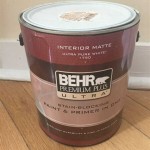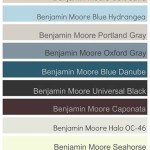```html
What Color Should I Paint My Wooden Fence?
Selecting the appropriate color for a wooden fence is a decision that extends beyond mere aesthetics. It involves considering various factors, including the architectural style of the house, the surrounding landscape, local climate, durability, and personal preferences. The ideal color will complement these elements, enhancing the overall visual appeal of the property while providing long-term protection to the wood.
The objective of this article is to provide a comprehensive guide to the selection process, offering insights into the different color options available and the implications of each choice. By understanding these considerations, homeowners can make an informed decision that results in a beautiful and functional fence that will last for years to come.
Architectural Style and Color Harmony
The architectural style of the house plays a crucial role in determining the appropriate fence color. A color that clashes with the home's existing aesthetic can detract from its overall beauty and reduce curb appeal. Therefore, it is essential to consider the colors already present on the house, including the siding, trim, and roof, and select a fence color that complements them.
For example, a traditional-style home with a light-colored siding, such as beige or cream, may benefit from a fence painted in a classic white or a soft gray. These colors create a clean, timeless look that enhances the home's elegance. Conversely, a modern home with darker siding, such as charcoal gray or navy blue, might pair well with a lighter-colored fence, like a bright white or a natural wood stain, to provide contrast and visual interest. Ranch-style homes often work well with earth tones, such as browns, tans, or even muted greens, which blend seamlessly with the surrounding landscape.
It's also important to consider the accents and details of the home. If the house has vibrant-colored shutters or a brightly colored front door, the fence color should complement these elements without competing with them. A neutral fence color can provide a backdrop that allows these accents to stand out, while a carefully chosen complementary color can enhance their impact.
Furthermore, considering the historical context of the architectural style can guide the color selection. For instance, Victorian-era homes often incorporated elaborate details and a range of colors. While a full-blown Victorian color scheme on a fence might be excessive, subtly incorporating some of these hues, perhaps as an accent color on the fence posts or trim, can be a tasteful way to pay homage to the architectural style.
Ultimately, the goal is to achieve a harmonious balance between the house and the fence. This involves carefully considering the existing color palette and architectural details of the home and selecting a fence color that enhances its beauty and curb appeal.
Landscape Integration and Environmental Considerations
The surrounding landscape is another essential factor to consider when choosing a fence color. The fence should blend harmoniously with the natural environment, enhancing the overall visual appeal of the property rather than clashing with it. The color of the lawn, trees, shrubs, and other vegetation should all be taken into account.
For properties with lush green lawns and abundant foliage, earth tones like browns, tans, and muted greens can be an excellent choice. These colors blend seamlessly with the natural surroundings, creating a sense of tranquility and cohesion. A dark brown fence, for example, can provide a strong backdrop for colorful flowers and vibrant greenery, making them stand out even more.
In contrast, for properties with less vegetation or a more arid climate, lighter colors like white, gray, or even pale blue can be a better option. These colors reflect sunlight, helping to keep the surrounding area cooler and brighter. A white fence can also create a clean, crisp look that contrasts beautifully with the natural landscape.
Furthermore, the color of the soil can influence the choice of fence color. If the soil is reddish-brown, a fence painted in a complementary color, such as a muted green or a warm beige, can help to balance the overall landscape. If the soil is sandy, a fence painted in a light color can help to brighten the area and create a more inviting atmosphere.
Environmental considerations also play a role in the color selection process. Darker colors absorb more heat, which can be a disadvantage in hot climates. Lighter colors reflect sunlight, helping to keep the surrounding area cooler. Therefore, in hot climates, it is generally best to choose a lighter-colored fence. Furthermore, the type of paint used should be environmentally friendly, with low VOC (volatile organic compounds) to minimize its impact on the environment.
By carefully considering the surrounding landscape and the environmental conditions, homeowners can select a fence color that enhances the beauty of their property while minimizing its impact on the environment.
Durability, Maintenance, and Paint Types
Beyond aesthetics, the durability and maintenance requirements of different paint colors are crucial considerations. Darker colors, while visually appealing, tend to absorb more heat, which can lead to premature fading and cracking of the paint. This is particularly true in regions with intense sunlight and extreme temperature fluctuations. Lighter colors, on the other hand, reflect more sunlight, which can help to prolong the life of the paint and reduce the need for frequent maintenance.
The choice of paint type also significantly impacts the durability and maintenance of the fence. Oil-based paints offer excellent durability and resistance to moisture, making them a good choice for fences exposed to harsh weather conditions. However, they can be more difficult to apply and require more time to dry. Latex or acrylic paints are easier to apply, dry quicker, and are generally more environmentally friendly. While they may not be as durable as oil-based paints, high-quality acrylic paints can still provide excellent protection for wooden fences.
Before painting the fence, proper preparation is essential. This includes cleaning the fence to remove any dirt, debris, or mildew, repairing any damaged boards, and priming the wood to ensure proper adhesion of the paint. A good primer will also help to protect the wood from moisture and prevent it from rotting.
In addition to the paint color and type, the finish of the paint can also affect its durability and maintenance. A glossy finish is more resistant to dirt and grime, making it easier to clean. However, it can also highlight imperfections in the wood. A matte finish is less reflective and can hide imperfections, but it may be more difficult to clean. A semi-gloss finish offers a good balance between durability and ease of maintenance.
Regular maintenance, such as washing the fence with soap and water and touching up any areas where the paint has chipped or faded, can help to prolong the life of the fence and keep it looking its best. By choosing a durable paint type, preparing the fence properly, and performing regular maintenance, homeowners can minimize the need for frequent repainting and ensure that their fence remains beautiful and functional for years to come.
Ultimately, selecting the right paint color for a wooden fence requires careful consideration of various factors, including architectural style, landscape integration, durability, maintenance, and personal preferences. By taking these elements into account, homeowners can make an informed decision that results in a beautiful and long-lasting fence that enhances the overall value and appeal of their property.
```
Should I Stain Or Paint My Fence Buzz Custom

5 Fence Paint Colors To Refresh Your Exterior Curb Appeal Wow 1 Day Painting

Paint Or Stain My Condo S New Wood Fence Premium Company

Fence Paint Colours

Do S And Don Ts For Choosing The Right Fence Colour Maria Killam

Choosing The Right Colour For Your Fence Makeovers

What Colour Should I Paint My Fence Or Shed

Best Colour For Fences In Small Gardens

5 Fence Paint Colors To Refresh Your Exterior Curb Appeal Wow 1 Day Painting

Should I Stain My Fence Tips From A Professional Painting Service Jeno Paint Werx
Related Posts








